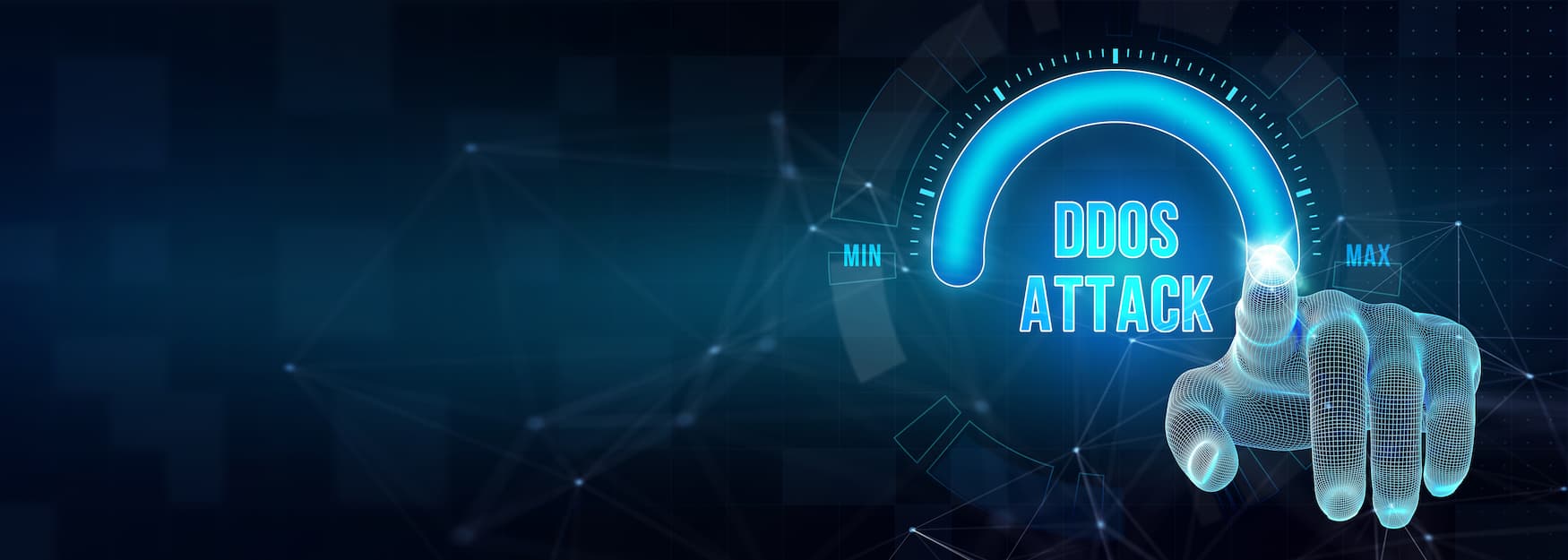Cybersecurity It is the set of practices, technologies, and processes used to protect systems, networks, programs, and data from attack, damage, or unauthorized access. The Cybersecurity It has become a fundamental pillar to guarantee the protection of information, whether personal, business or governmental, in an increasingly interconnected world. With increased access to the internet and reliance on digital technologies, cyber protection has evolved from an option to an urgent need.
Now, we will talk a little about the historical evolution of cybersecurity:
The origins of cybersecurity They can be traced back to the early days of computing and the development of the Internet. The Cybersecurity It initially focused on the physical protection of computer systems. However, with the development of networks, in particular with the creation of the ARPANET in the 1960s (precursor to the internet), the need to safeguard connected systems from possible external disturbances became imposed.
During the 70s and 80s, significant risks were presented, such as the well-known “Morris Worm” in 1988, one of the first computer viruses that had an impact on thousands of systems. The importance of Cybersecurity began to be recognized from that moment on, with the creation of more effective security measures and the implementation of regulations.
Today, cybersecurity it has evolved to a much more complex level. It has spanned from protecting individual computers to encompassing global networks, cloud data, mobile devices, and even emerging technologies such as the Internet of Things (IoT) and artificial intelligence. In this context, the Cybersecurity includes a wide variety of techniques and measures designed to detect, prevent, and respond to security incidents.
To fully understand cybersecurity, it is essential to understand its components. Some of the fundamental pillars are:
Confidentiality:
One of the main objectives of cybersecurity is to ensure that information is only available to authorized individuals. Confidentiality protection is achieved through technologies such as encryption, which ensures that data cannot be read or interpreted by unauthorized third parties.
Integrity:
Cybersecurity It seeks to maintain data integrity, i.e., to ensure that information is not altered in an incorrect or unauthorized manner. Access control and data verification mechanisms are essential to protect the integrity of systems.
Availability:
Another key aspect of cybersecurity is to ensure that systems and information are available when authorized users require it. This involves preventing attacks that seek to disrupt or limit access to systems, such as denial-of-service (DDoS) attacks.
Authentication:
Authentication is an essential component of cybersecurity. It ensures that only people or systems with the correct permissions can access certain resources or perform specific actions.
Non-repudiation:
This element ensures that the parties involved in a transaction or communication cannot deny their participation or the authenticity of the transaction. Digital signatures are a key tool in this area.
Although closely related, cybersecurity and privacy are not the same thing. Privacy focuses on the control that a person or entity has over your personal information, while privacy is the control that a person or entity has over your personal information. Cybersecurity It focuses on protecting systems, networks, and data from attacks. In other words, the Cybersecurity is the technical foundation that helps ensure privacy, ensuring that data is not exposed or stolen.
Cybersecurity It is essential to protect the privacy of individuals and businesses in a world where data has become the most valuable asset. The European Union’s General Data Protection Regulation (GDPR), for example, emphasizes the importance of cybersecurity to protect personal data.
The digital economy is also affected by cybersecurity. As businesses increasingly rely on e-commerce, digital payments, and global connectivity, it’s essential that they protect themselves against cyber threats. A failure in the Cybersecurity can have serious economic repercussions, including loss of customer trust, legal penalties, and large financial losses.
Therefore, companies should invest in cybersecurity. Not only can cyberattacks damage a company’s reputation, but they can also disrupt operations and cause significant economic damage. Security breaches that lead to the theft of personal data can result in lawsuits and fines, especially in jurisdictions with strict data protection laws.
Cybersecurity in a Connected World:
the rise of smart devices and the growth of the Internet of Things (IoT) has led to a new approach to cybersecurity. Security cameras, connected appliances, and building management systems are examples of IoT devices with security vulnerabilities that attract cyberattackers. The protection of these devices is crucial for the Cybersecurity.
In addition, digital transformation in sectors such as health, education, and finance is creating new challenges for cybersecurity. To ensure that critical infrastructures are not breached due to the increasing amount of data being stored and processed digitally, measures are required to More advanced cybersecurity.
To conclude cybersecurity It is a constantly evolving field, essential for the safe and efficient functioning of modern societies. It’s not just about protecting systems and data from today’s threats, but also about anticipating future vulnerabilities. As the world continues to move towards greater interconnectivity, the Cybersecurity It will continue to be a priority for both individuals and organizations. Its importance lies in the ability to protect the integrity, privacy and availability of information in a globalized digital environment.
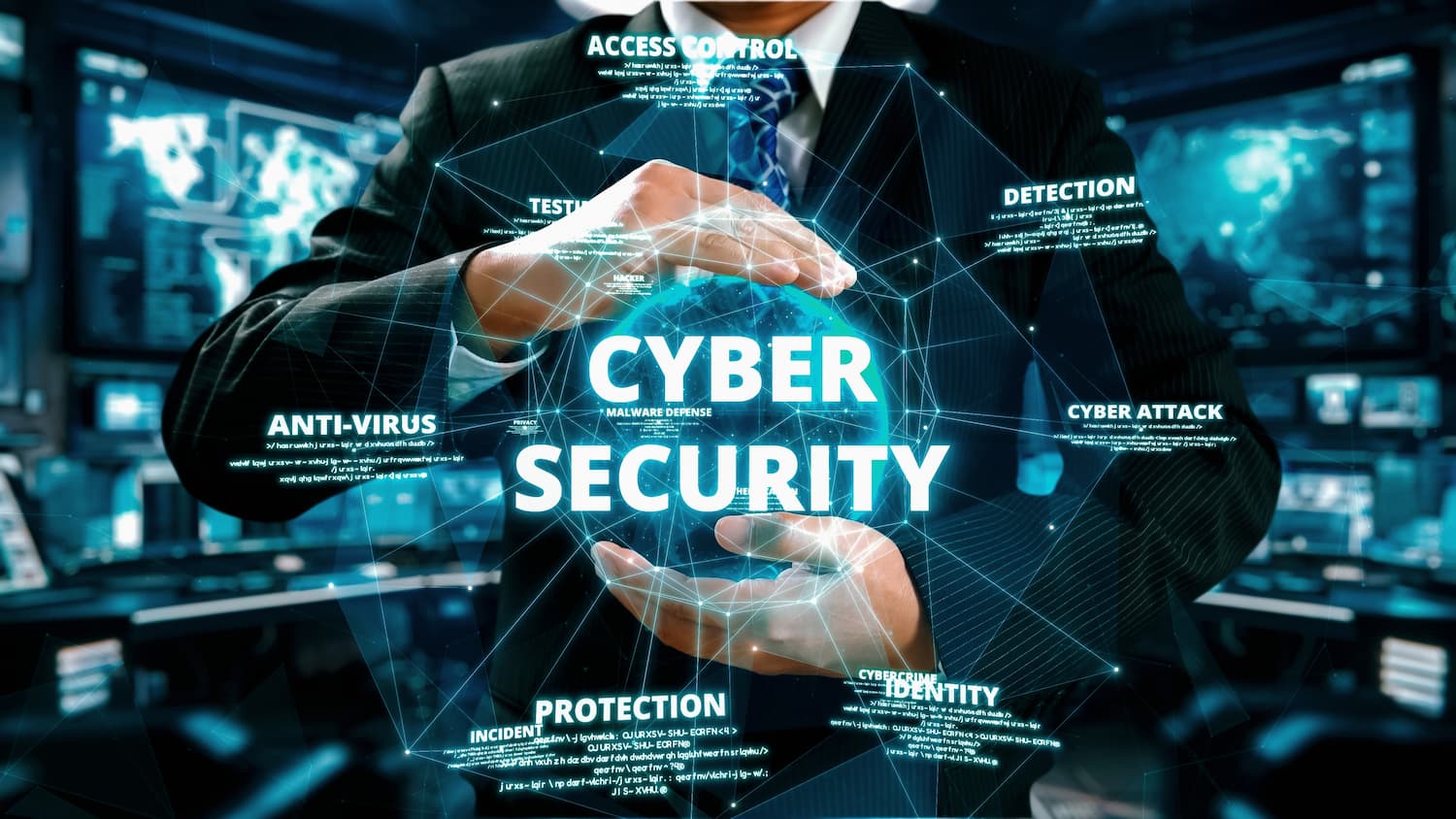
What are the main characteristics of cybersecurity?
Cybersecurity It includes a variety of strategies, practices, and technologies that are used to protect information and systems from potential hazards. To better understand the Cybersecurity, it is essential to identify and analyse its most pertinent aspects. These characteristics determine how organizations implement development strategies. cybersecurity and how they adapt to ever-evolving threats.
1. Multidimensionality:
One of the main characteristics of cybersecurity it is its multidimensional nature. This means that the Cybersecurity It is not limited to a single technique or technology. Instead, it involves a comprehensive approach that encompasses multiple areas, including:
- Network protection: Refers to measures implemented to protect an organization’s network infrastructure, including firewalls, intrusion detection systems, and perimeter security devices.
- Endpoint security: Securing all network-connected devices, such as computers, mobile phones, and servers, using antivirus software and mobile device management (MDM) solutions.
- Application Security: It involves protecting software applications against vulnerabilities and attacks. This can include code reviews, penetration testing, and access controls.
- Data security: Focused on the protection of stored and transmitted data, it includes techniques such as encryption and the use of strict access controls.
To address the various layers of risk in cybersecurity and ensure a stronger defense against cyberattacks, this multidimensional approach is crucial.
2. Prevention and proactive detection:
Proactive threat prevention and detection is another essential feature of cybersecurity. Rather than simply responding to attacks once they have occurred, organizations must anticipate potential attacks. This includes:
- Risk analysis: Assess vulnerabilities and potential entry points for attackers, allowing organizations to prioritize their efforts in the most critical areas.
- Constant monitoring: Implement real-time monitoring solutions that detect unusual or unauthorized activity within the network.
- Simulations and tests: Perform cyberattack simulation exercises (red team vs. blue team) to identify weaknesses in defenses and improve incident response.
This proactive method not only prevents attacks, but also reduces their impact if they occur.
3. Incident response capacity:
Another crucial feature of cybersecurity it is the ability to respond to incidents. Organizations must be prepared to react in an emergency because it is virtually impossible to eliminate all threats. This contains:
- Incident Response Plans: Development of a structured plan that details how a security incident will be handled, who will be held responsible, and what actions will be taken to mitigate the damage.
- Response teams: Training of specialized teams, such as incident response teams (IRTs), to handle crises and restore normal operations.
- Post-incident assessment: Post-incident analysis to identify what went wrong, what measures can be improved, and how it can be prevented from happening again in the future.
Responsiveness can make the difference between a manageable cyber crisis and one that causes significant damage.
4. Awareness and training:
All employees in an organization are responsible for cybersecurity, not just the technical team. Creating a workplace safety culture is based on awareness and training. This includes:
- Regular training: Ongoing training programs for employees on cybersecurity best practices, how to recognize phishing emails, and how to handle sensitive information.
- Clear security policies: Establishing policies that guide employee behavior in relation to the use of technology and handling of data.
- Attack simulations: Exercises that test employees in cyberattack situations, reinforcing the importance of cybersecurity in their daily work.
Training and awareness help reduce the risk of human error, which is one of the most common causes of security breaches.
5. Regulatory compliance:
The need to comply with a variety of regulations and regulations is another characteristic of cybersecurity. Many industries meet specific requirements that require companies to take appropriate measures to Cybersecurity. The following are examples:
- General Data Protection Regulation (GDPR): In the European Union, this regulation imposes strict obligations on how personal data is handled and protected.
- Children’s Online Personal Information Protection Act (COPPA): In the U.S., this law protects children’s privacy online and sets requirements for apps and services directed to them.
- Industry-specific regulations: Many industries have additional regulations, such as the Health Insurance Portability and Accountability Act (HIPAA) for the healthcare sector and the Payment Card Industry Data Security Standard (PCI DSS) for organizations that handle credit card data.
Complying with these regulations is not only a legal requirement, but it also improves the organization’s overall posture on cybersecurity.
6. Adaptability and evolution:
Cybersecurity strategies They must adapt to the ever-changing cyber threat landscape. It is essential to have the ability to adapt and evolve in response to new threats and technologies. This includes:
- Ongoing research: Organizations need to stay informed about the latest cyberattack trends and techniques, as well as new cybersecurity solutions.
- Software and system updates: Deploy regular updates to fix vulnerabilities and improve defenses.
- Policy review and adjustment: Regularly evaluate and modify cybersecurity policies to ensure they remain effective against new threats.
7. Collaboration:
In cybersecurity, collaboration is key. Multi-stakeholder cooperation, such as
- Organizations and enterprises: Sharing threat information and best practices across different organizations and industries.
- Government and private sector: Collaborate with government agencies to obtain threat intelligence and participate in cybersecurity initiatives at the national level.
- Cybersecurity communities: Participate in forums, focus groups, and conferences to exchange knowledge and strategies.
Collaboration not only improves individual cyber defense, but also contributes to an overall more secure ecosystem.
To summarize, cybersecurity It is a complex and constantly evolving field that is characterized by its multidimensionality, proactive responsiveness, and the need to comply with regulations. Your success depends on an adaptive approach, advanced technology, ongoing training, and teamwork. These features are essential to ensuring the security of systems and data in a digital world as cyber threats continue to grow in sophistication and frequency.
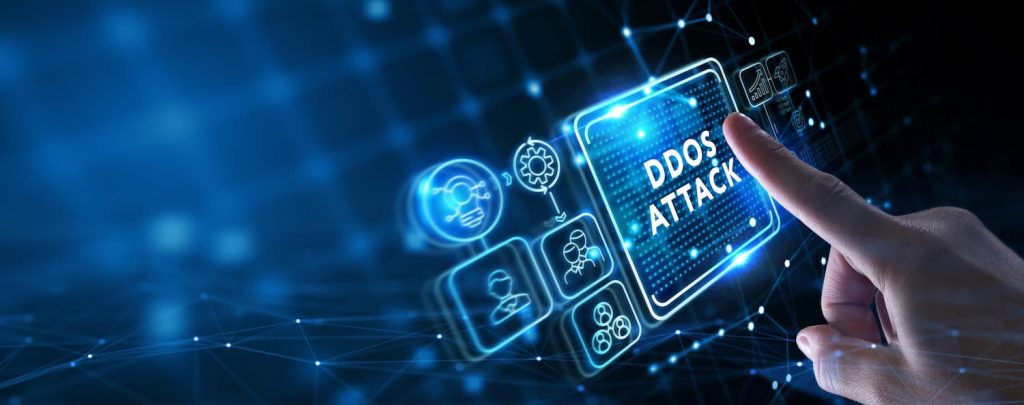
What types of cybersecurity attacks are there?
Cybersecurity It faces a variety of threats and attacks that seek to damage the integrity, confidentiality, and availability of systems and data. To take effective protective measures, it is necessary to understand the different types of attacks. The following are the most frequent cyberattacks that currently threaten the Cybersecurity.
1. Malware:
One of the most well-known types of cyberattacks is malware, also known as malicious software. It refers to any software designed to damage or access computer systems without the user’s consent. Several types of malware exist:
- Virus: It spreads by infecting other files and programs, and is triggered when the infected file is executed. Viruses can cause significant damage and reproduce themselves.
- Worms: Similar to viruses, but they spread automatically through networks, without the need for a host file. They can overwhelm networks and cause massive outages.
- Trojans: They are disguised as legitimate software, but once installed, they can allow unauthorized access to systems. They do not reproduce like viruses or worms, but they can be equally destructive.
- Ransomware: A type of malware that encrypts the victim’s files and demands a ransom to unlock them. This type of attack has grown in popularity and can cause severe financial losses to organizations.
2. Phishing:
Phishing is a type of social engineering attack that uses deceptive methods to collect sensitive data such as passwords and financial data. Attackers send emails, text messages, or even phone calls that appear to come from legitimate sources. Phishing can occur in several ways:
- Spear Phishing: It targets specific individuals or groups within an organization. It uses personalized information to make the message appear legitimate.
- Whaling: A type of spear phishing that targets senior executives or influencers within an organization, leveraging their position to gain valuable information.
- Smishing and Vishing: Smishing refers to phishing through text messages, while vishing involves phone calls. Both seek to trick victims into revealing sensitive information.
3. Denial of Service (DoS) attacks:
Denial of Service (DoS) attacks aim to render a service, network, or system inoperative by overloading it with unnecessary traffic. There are variants:
- DoS: A single system is used to perform the attack, sending a large amount of traffic to exhaust server or network resources.
- DDoS (Distributed Denial of Service): It uses multiple compromised systems, often part of a botnet, to launch the attack. This increases the complexity and scale of the attack, making it more difficult to mitigate.
4. SQL Injection:
An attack known as SQL injection uses vulnerabilities in web applications that use databases. Attackers insert malicious SQL code into data entry forms, allowing them to access, modify, or delete data from the database. This type of attack can expose sensitive data, damage data integrity, and damage an organization’s reputation.
5. Man-in-the-Middle (MitM) attacks:
An attacker in a Man-in-the-Middle (MitM) attack intercepts communication between two parties, such as a user and a server, without either party’s knowledge. Attackers can steal sensitive data, install malware, or direct victims to malicious websites. This type of attack is particularly concerning on public and unsecured Wi-Fi connections.
6. Brute Force:
Brute force attacks are when an attacker uses automated programs that try a large number of possible combinations to try to guess passwords or encryption keys. If passwords are weak or easy to guess, this method may work. Implementing multi-factor authentication and using complex passwords to protect yourself is recommended.
7. Exploiting Vulnerabilities:
Attackers frequently seek to exploit flaws in software and operating systems that have not been updated or patched. These flaws can include code errors, misconfigurations, or system design errors. Attacks can include:
- Zero-Day: These occur when an attacker exploits a vulnerability that has not been discovered or patched by the software manufacturer.
- Code exploits: Use known vulnerabilities to execute malicious code on a system.
8. Credential Stuffing Attacks:
Credential hoarding attacks use a mix of usernames and passwords that have been stolen from previous data breaches. Attackers use these credentials to try to access other accounts, taking advantage of the fact that many people reuse the same credentials on different platforms. Since it allows attackers to access social media accounts, emails, and financial accounts, this type of attack can be devastating.
9. Social Engineering Attacks:
Social engineering manipulates people into revealing sensitive data. Attackers frequently use psychological tactics to deceive victims. These attacks could be:
- Pretexting: The attacker creates a false story to obtain information from the victim, posing as someone who has a right to that information.
- Baiting: The deception is used to lure the victim into downloading malware. For example, leaving an infected device (such as a USB) in a public place for someone to find and connect to your computer.
10. Cross-Site Scripting (XSS):
Cross-Site Scripting (XSS) attacks allow attackers to inject malicious scripts into websites visited by other users. These scripts can steal sensitive information, such as session cookies, and use them to impersonate the user. XSS protection involves validating and sanitizing all data that is submitted through online forms.
The types of cyberattacks are diverse and constantly evolving, so it’s essential for both individuals and organizations to stay up to date with the latest threats. The first step to implementing effective defense strategies is to understand these threats. The Cybersecurity is not only about protecting technological infrastructure, but also about educating and raising awareness of users about the dangers and how they can help maintain security in the digital world.
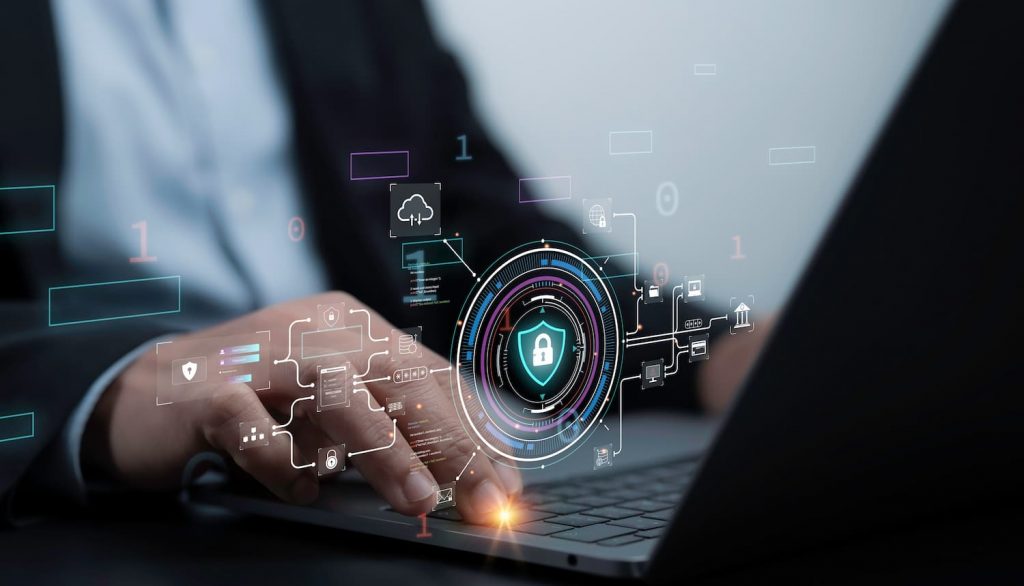
Where is cybersecurity applied?
The field of cybersecurity It has applications in almost every aspect of modern life. The Cybersecurity It has become essential for protecting information, maintaining privacy, and ensuring continuity of operations, from businesses to governments to individual users. The main areas of application of the Cybersecurity.
1. Companies and organizations:
Businesses, regardless of their size, are prime targets for cyberattacks. The Cybersecurity in this context is applied to protect:
-
- Sensitive data: Organizations store and process critical information, such as financial data, customer information, and intellectual property. The Cybersecurity ensures that this data is protected from unauthorized access and leaks.
- Technology infrastructure: The networks, servers, devices, and applications that make up a company’s technology infrastructure must be protected from threats such as malware and denial-of-service attacks.
- Business Reputation: A Cybersecurity Incident can have a devastating impact on a company’s reputation. The Cybersecurity helps prevent breaches that could damage customer trust and brand image.
- Regulatory compliance: Many industries are subject to regulations that require compliance with cybersecurity standards. This includes implementing appropriate measures to protect data and systems.
2. Governments and public entities:
Governments are responsible for protecting critical infrastructure and citizens’ data. The Cybersecurity in this area applies to:
- Protect critical infrastructure: This includes systems that control essential services, such as electricity, water, and transportation. The Cybersecurity helps ensure that these systems are not disrupted or compromised.
- Maintain national security: Governments use cybersecurity to prevent attacks that can compromise national security, such as cyberespionage and cyberterrorism.
- Protect personal information: Cybersecurity is vital to protect citizens’ personal information, such as identification data and medical records.
3. Financial sector:
Because it handles critical and sensitive data, the financial sector is one of the most attacked. Cyber security is applied in:
- Transaction Protection: Cybersecurity ensures that financial transactions are secure, protecting credit card information and bank details.
- Fraud prevention: Cybersecurity systems are in place to detect and prevent fraudulent activity, such as unauthorized use of bank accounts.
- Regulatory compliance: Financial institutions must comply with strict cybersecurity standards to protect customer information and ensure the stability of the financial system.
4. Health:
Due to the sensitivity of patient data, cybersecurity in the health sector it is crucial. It is required for:
- Protect patient data: Electronic medical records contain highly sensitive information that must be protected from unauthorized access.
- Secure Medical Devices: Many medical devices are connected to networks, making them vulnerable to attack. The Cybersecurity helps protect these devices and ensure their proper functioning.
- Regulatory compliance: Regulations, such as the Health Insurance Portability and Accountability Act (HIPAA) in the U.S., require specific cybersecurity measures to protect health information.
5. Education:
Educational institutions are also targets of cyberattacks. The Cybersecurity is applied in this sector to:
- Protect student information: Students’ personal and academic information must be protected from unauthorized access.
- Secure online learning platforms: Online education platforms must be secure to protect user information and interactions.
- Preventing disruptions: Institutions must ensure that systems are not disrupted by cyberattacks, especially in an increasingly digital learning environment.
6. E-commerce:
E-commerce has grown exponentially, making cybersecurity essential for:
- Protect online transactions: E-commerce platforms must implement cybersecurity measures to ensure that transactions are secure.
- Protect customer data: Credit card information and personal data must be protected to prevent identity theft and fraud.
- Maintain customer trust: Cybersecurity contributes to customer trust in e-commerce platforms, ensuring that their information is secure.
7. Critical infrastructure:
Cybersecurity is applied to protect a nation’s critical infrastructure, including:
- Power grids: The security of grids that supply power is crucial to prevent blackouts and ensure continuous supply.
- Transportation systems: Cybersecurity helps protect the systems that manage traffic and public transportation, avoiding disruptions to services.
- Water and sanitation systems: Protecting the systems that control the water supply is vital for public health and safety.
8. Individual users:
Cybersecurity It applies not only to organizations and governments, but also to individual users who must protect their personal information. This includes:
- Personal device security: Users should implement cybersecurity measures on their computers, smartphones, and other devices to protect their information.
- Online account protection: Using strong passwords and multi-factor authentication is critical to protecting social media accounts, emails, and other online services.
- Threat awareness: Education about cyber threats, such as phishing, is crucial so that individual users can properly protect themselves.
Cybersecurity It is used in a wide range of contexts, from businesses and governments to individual users. All stakeholders must take a proactive, multifaceted approach to protecting information and systems due to the steady growth of cyber threats. The Well-executed cybersecurity not only protects data, but also increases trust and stability in the digital world.
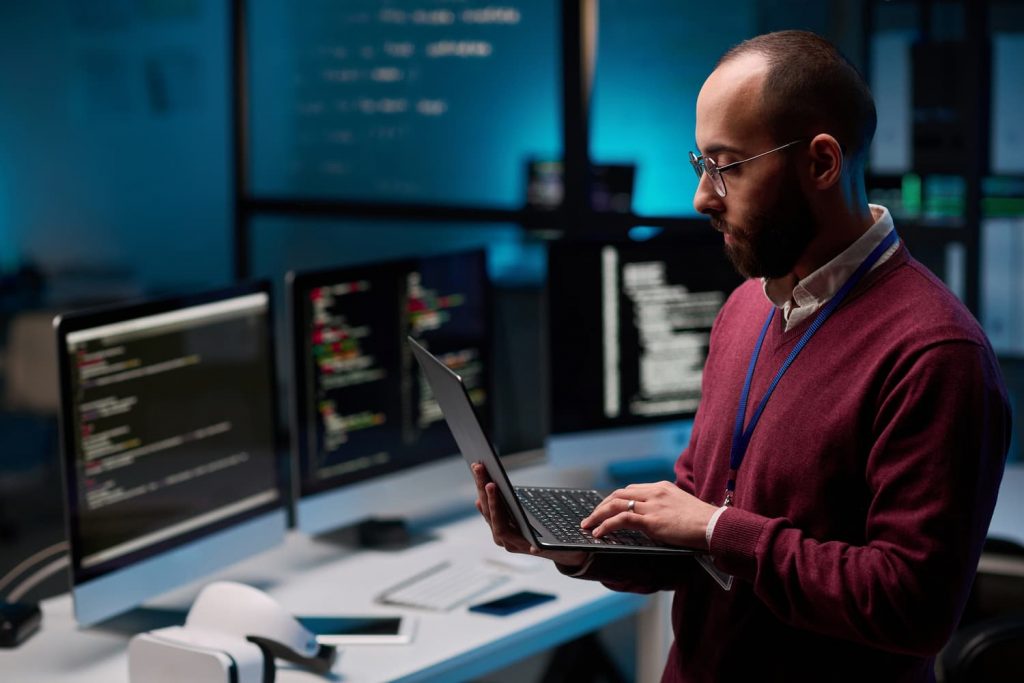
What are the 5 points of cybersecurity?
Cybersecurity It is a complex and ever-evolving field that includes a variety of practices and approaches to protect information and systems from cyberattacks and threats. To carry out a strategy of Cybersecurity In order for it to work, it is essential to pay attention to certain fundamental elements that form the basis of a strong defense. Five key aspects of the Cybersecurity.
1. Infrastructure protection:
The first and most important point in cybersecurity it is the protection of technological infrastructure. This includes all elements of an organization’s technology environment, such as:
-
- Networks: Implement firewalls, intrusion detection and prevention systems, and segment the network to limit access to critical data. Networks must be designed to withstand attacks and prevent unauthorized access.
- Servers: Ensure that all servers are up-to-date with security patches and proper configurations. Using default configurations can be a risk, so it’s crucial to customize the security of each server.
- End devices: Protect computers, mobile phones, and other devices that access the network. This includes the use of antivirus software, malware detection tools, and constant updating practices.
2. Identity and access management:
Identity and access management is vital to ensure that only authorized individuals have access to critical information and systems. Strategies at this point include:
- Multi-Factor Authentication (MFA): Require multiple forms of verification before allowing access. This can include passwords, codes sent to mobile phones, or biometric authentication.
- Role-Based Access Control (RBAC): Implement policies that limit access to sensitive information based on the user’s role within the organization. This helps minimize the risk of unauthorized access.
- Audits and monitoring: Conduct regular access audits and monitor unusual activity. This can help to quickly detect and respond to potential violations of Cybersecurity.
3. Awareness and training:
The cybersecurity strategy of an organization should focus on employee training and awareness. Because most of the breaches of If cybersecurity is due to human error, it is critical that employees learn about:
- Threat recognition: Train employees to identify phishing emails, social engineering attacks, and other common threats.
- Secure practices: Instruct on the use of strong passwords, proper handling of sensitive data, and the importance of security in the use of personal devices.
- Response protocols: Ensuring employees are aware of the procedures to follow in the event of a cybersecurity incident, including who to report to and how to mitigate damage.
4. Incident response and recovery:
To reduce the impact of a cyberattack, it is essential to have the ability to respond to and recover from a cybersecurity incident. At this time, the essential components are:
- Incident Response Plans: Develop and document a response plan detailing the steps to take in the event of an attack. This should include roles and responsibilities, as well as specific actions to contain and mitigate the damage.
- Drills and tests: Conduct regular drills to test the effectiveness of the response plan and ensure that all employees know their roles. This helps identify weaknesses and areas for improvement in the response strategy.
- Data Recovery: Implement data backup and recovery procedures to ensure that critical information can be restored after an incident. Backups should be secure and stored offline to prevent unauthorized access.
5. Regulatory compliance:
Compliance with cybersecurity regulations and regulations is an essential part of the cybersecurity strategy of any organization. This contains:
- Industry-specific regulations: Comply with regulations such as the General Data Protection Regulation (GDPR) in Europe, the Health Insurance Portability and Accountability Act (HIPAA) in the U.S., and other regulations governing data protection in specific industries.
- Audits and assessments: Conduct regular audits to ensure that regulations are met and cybersecurity practices are implemented Necessary. Not only does this help avoid sanctions, but it also strengthens the overall security posture.
- Documentation and Tracking: Maintaining Accurate Records of Cybersecurity Policies, the measures implemented and the incidents that occurred. This documentation is essential for audits and compliance reviews.
To establish a strong security posture, it is essential to follow the five fundamental principles of cybersecurity. Infrastructure protection, identity and access management, awareness and training, incident response and recovery, and regulatory compliance are critical areas that must be addressed holistically. The effective implementation of these points protects systems and data and promotes a culture of security in the organization.
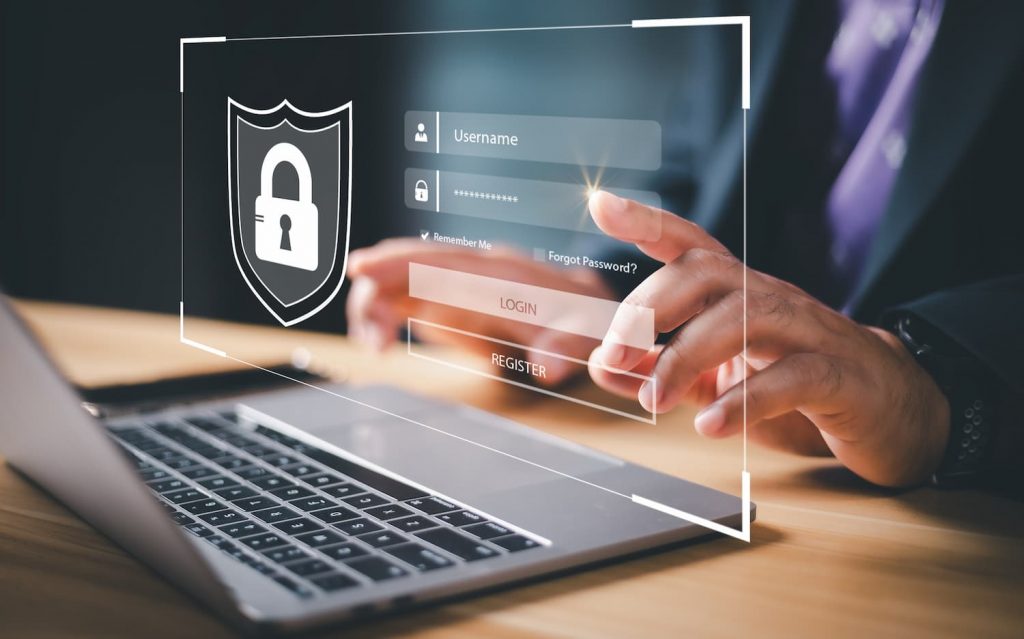
What are the benefits of cybersecurity?
In today’s digital environment, where cyber threats are becoming more common and sophisticated, cybersecurity it’s crucial. Good practices of Cybersecurity Not only do they protect organizations from attacks, but they also provide a number of benefits that can improve their performance and reputation. The following are the main advantages of the Cybersecurity.
1. Protection of sensitive data
Protecting sensitive data is one of the most important benefits of cybersecurity, including:
- Personal information: Cybersecurity protects the personal information of employees and customers, reducing the risk of identity theft and data breaches.
- Intellectual property: Organizations often develop unique technology and products. The Cybersecurity helps protect this valuable information from competitors and malicious actors.
Financial data: The protection of financial data is crucial to maintain customer trust and avoid financial losses. The Cybersecurity ensures that banking and credit card information is protected.
2. Maintaining business continuity:
Cybersecurity is essential to ensure that business operations continue without significant disruption.
-
- Minimize downtime: Cyberattacks can cause disruptions that result in financial loss. The implementation of Effective cybersecurity helps prevent attacks and minimize downtime.
- Rapid recovery: In the event of an incident, having a well-defined response and recovery plan allows organizations to restore operations quickly and limit the impact.
- Organizational resilience: Companies that invest in cybersecurity tend to be more resilient in the face of cyber threats, which translates into a better ability to face crises and maintain their position in the market.
3. Increased customer confidence
Cybersecurity It is essential to building and maintaining customer trust. The benefits are as follows:
- Privacy protection: By ensuring that customers’ personal information is secure, organizations demonstrate their commitment to privacy and data protection.
- Business reputation: Companies with good cybersecurity practices they are viewed more favorably by consumers. This can translate into increased customer loyalty and attracting new business.
- Customer loyalty: Trust builds long-term relationships. Customers are more inclined to remain loyal to companies that take care of their information and ensure the security of their transactions.
4. Regulatory compliance:
Organizations operating in regulated industries must comply with cybersecurity regulations. The benefits of compliance include:
- Avoiding Sanctions: Cybersecurity Violations can result in significant fines and legal penalties. The implementation of Proper cybersecurity helps organizations comply with regulations and avoid penalties.
- Process improvement: Regulatory compliance often drives organizations to improve their security processes and practices, resulting in a safer work environment.
- Increased investor confidence: Organizations that demonstrate strong compliance with cybersecurity regulations can attract investors and business partners who value security and risk management.
5. Long-term cost savings
Although investment in cybersecurity It may seem like a great investment at first, in the long run it can result in significant cost savings. The benefits are as follows:
- Reduction of costly incidents: Preventing attacks and breaches can prevent significant economic losses. The costs associated with recovering from a cyberattack are often much higher than the expenditures on prevention measures.
- Less downtime: Minimizing downtime by implementing effective cybersecurity reduces operational losses and maximizes productivity.
- Protecting technology investment: Cybersecurity helps protect investments made in technology and systems, ensuring that these resources remain useful and not compromised by external threats.
6. Competitive Advantage
Organizations that focus on cybersecurity they can solidly gain an edge in the market. The benefits are as follows:
- Differentiation in the market: Offering security guarantees to customers can be a differentiating factor in purchasing decision-making.
- Adapting to market demands: As cybersecurity becomes a priority for consumers, organizations that implement effective security practices will be better positioned to adapt to these demands.
- Fostering innovation: A secure environment allows organizations to innovate and explore new opportunities without the fear of compromising their digital assets.
7. Protection against emerging threats:
Cybersecurity helps organizations prepare for and protect against emerging threats, including:
- Adapting to new technologies: As new technologies emerge, such as artificial intelligence and the Internet of Things (IoT), cybersecurity ensures that these innovations are implemented securely.
- Preventing new types of attacks: Cyber threats are constantly evolving. The practices of Cybersecurity allows organizations to adapt and defend against new and sophisticated attacks.
- Threat analysis: Cybersecurity involves identifying and analyzing emerging threats, allowing organizations to stay one step ahead of attackers.
From data protection to customer trust and business continuity, the benefits of cybersecurity they are wide and deep. Implement Cybersecurity Not only does it reduce incidents, but it also fosters an environment of trust and resilience. The Cybersecurity is essential to the success and sustainability of digital organizations as cyber threats continue to evolve.


